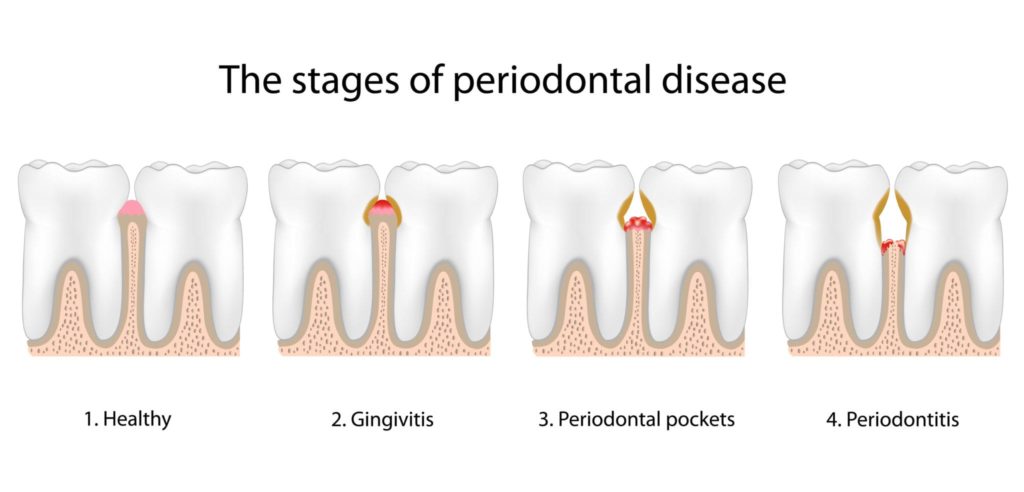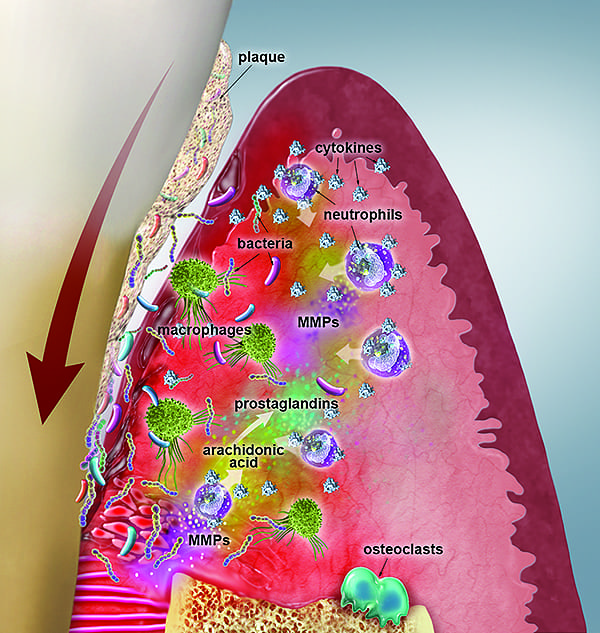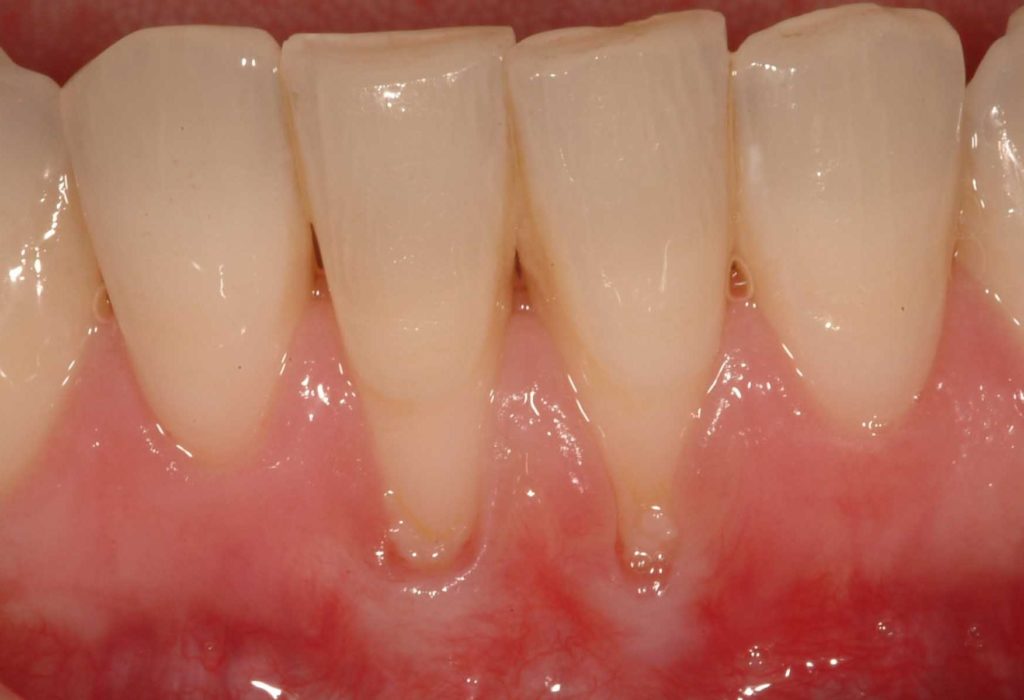Receding gums is the process of your gums shrinking to expose more of your teeth than is normal. In mild cases, gum recession is caught early on when there has been very mild damage. However, gums can recede to the point that that the entire tooth is exposed as well as some of the bone to which the tooth is connected. Gum recession may be hard to spot. One way to tell if your gums have receded, besides going to your dentist, is to feel for a ridge on the back of the tooth at the base where the gum line starts; however, this could just be a build-up of plaque. You may also notice that your gums hurt or that your teeth are loose; your teeth will hurt when you eat something hot or cold. When gums recede, nerves are exposed, and the pain from this condition can travel throughout your body causing neck, back and even knee pain.
There are quite a few factors that could lead to your gums receding, but it only takes one.
Gum infections, like gum disease, can cause your gums to recede. Such conditions destroy gum tissue.
Brushing too hard can also cause gum recession. By using a soft-bristled toothbrush, we can avoid gum recession. Other items that may rub up against our gums in an abrasive way and cause our gums to recede are mouth piercings, such as those done on the lip or tongue.
Poor dental care can also cause gums to recede. Dental care at home consists of more than just brushing at least twice a day. We should also floss at least a few times a week and use mouthwash. Any build-up on our teeth that is not taken care of by brushing correctly and other at home dental hygiene should be addressed by our dentist.
Avoid brushing for at least an hour after consuming erosive food and drink, such as sports drinks, fruits and salads. You can rinse your mouth with water immediately after eating such foods to rinse away particles, odour and colour.
Hormonal changes in women can also bring about conditions that cause gum recession. The changes in hormones in a woman’s body during puberty, pregnancy and menopause can make the gums more sensitive, irritable and thus more prone to gum recession.
Tobacco is a substance that can lead to receding gums. Regardless of how you use tobacco, the sticky residue that it leaves on your teeth builds up over time, taking up an ever-increasing amount of space and causing your gums to recede.

Grinding your teeth, teeth that don’t meet or touch and misaligned teeth also cause gums to recede. These conditions all put too much pressure on gums and the bones connected to the teeth, and this can cause the gums to recede.
Insufficient dental care: This is what it all stems from, especially since 30 percent of the population has a natural predisposition to gum recession. By getting regular dental care, we can avoid gum recession or at least treat it early on.

How to Treat Receding Gums
There are a few ways to treat receding gums depending on how mild or severe the case.
One of the ways that we can treat receding gums is with mouthwash. Mouthwash plays a huge roll in treating early gum recession. However, it can also cause it too. Ingredients such as alcohol and sodium lauryl sulphate dry out the mouth and gums. Saliva fights the bacteria that can cause gums to recede, and over time, a lack of it can cause gum recession. Unless prescribed by our dentist, we should use a natural mouthwash or make our own from a natural toothpaste or other natural ingredients. Many stores sell natural mouthwash and toothpastes, and they can always be found at a health or natural food store. Certain types of mouthwash are specially formulated for dental issues, such as gum disease, halitosis, gum recession and to prevent infection after dental surgery. Curasept is one brand of mouthwash that can be used to treat gum recession. It shouldn’t be used for longer than two weeks at a time.
Flossing
Gentle flossing may help to prevent or treat receding gums. Many dentists recommend a water flosser. This will work as a gentle form of flossing to clean in between the teeth and gums, and it is also therapeutic for the gums. It cleanses them and gently massages them getting the blood flowing, which encourages them to be healthy. From Water Pik Inc., the Waterpik Ultra Water flosser has been proven by dental hygienists to be 93% more effective than flossing with dental floss.
Brushing with An Electric Toothbrush
An electric toothbrush can clean a lot more thoroughly and gently than traditional brushing. The thing about cleaning your teeth and gums well is that it prevents infections, which can lead to gum recession. By cleaning gently, we prevent our gums from getting tiny little cuts and scrapes, which could lead to infections that cause gum recession. The Oral-B 4000 CrossAction is an electric toothbrush, which is considered one of the best for receding gums.
Teeth Whitening
You can whiten your teeth if you have receding gums; however, exposed roots won’t be whitened. To prevent extra pain and damage to tooth enamel, use a fluoride toothpaste before you start the whitening process and throughout the procedure.
Your dentist may determine that no mild form of treatment like gentle brushing, mouthwash, flossing or medication is enough to reverse your receding gums. In such cases, he or she may opt for deep cleaning to remove tarter and plaque build-up. In advanced cases, the dentist will perform surgery to peel back the gums, get rid of the infection or decay and apply an antibiotic. Sometimes, a treatment will be done that helps regeneration of bone or tissue lost due to receded gums.
We can do our best to prevent receding gums by seeing our dentist or periodontist regularly. Also, asking about any changes in our oral health that may be troubling to us can help catch any problems before they become full blown. We must also keep up on at home dental care and eat a healthy diet to keep gum recession at bay.
